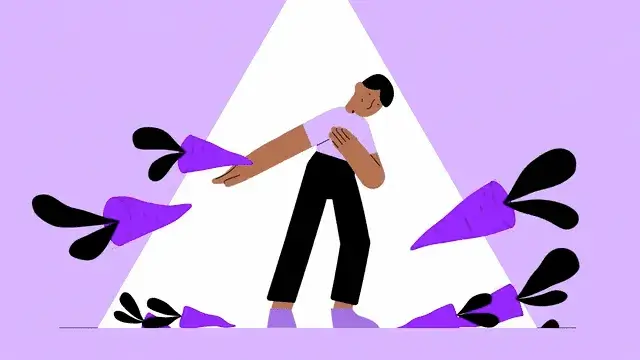- Explainer Video for Business
- Explainer Video for Mobile App
- Explainer Video for SaaS
- Explainer Video for Websites
- Explainer Video Guide
- Explainer Video Examples
- Explainer Video Types
- Explainer Video Length
- Explainer Video Script
- Explainer Video Cost
- Explainer Video Benefits
- Explainer Video Storyboard
- Animated Explainer Video
- Educational Explainer Video
You can do almost anything by Googling it. Think of how many times you encountered a problem and Googled the answer. As the saying goes, show rather than tell. It is why people latch onto videos quicker than written texts. Videos are compelling and send the message quickly. It is also why companies turn to videos to market their products.
A well-crafted video’s appeal is versatile as it translates from a product or service to onboarding new employees. If you’re one of them, you’ll surely benefit from this guide on creating easy animated how-tos and explainer videos.
Why You Need to Get into Video Production
People rely more on videos than written texts, so it is high time your company utilizes them. You can attract more customers who come across video ads and explainer videos than if you were to send out flyers. That way, you can attain a more organic following for your brand.
There are two ways to go about video production: DIY or hiring professionals. Nowadays, even if you have no prior knowledge of video production, there are lots of video editing courses you could take. Some of them are even kid-friendly.
You could also look at guides like a video production list. Plus, something is satisfying about seeing your hard work. But it takes time because you’re also doing the work, and the quality might not be what you expect.
On the other hand, hiring a professional team removes the burden off your shoulders. You aren’t stuck with the legwork and the required equipment. You are also guaranteed professional quality. But it may not be an option if the budget is tight. Both have their merits. But ultimately, you are going to be the better judge of what your company needs.
Video Production Formats
A how-to video is educational. It can cover topics ranging from sewing a button to survival skills like knowing what to do in an earthquake or fire. It can consist of a live-action video. But it can also be animated, which uses animated drawings, caricatures, or even a whiteboard-style of storytelling.
Meanwhile, an explainer video presents your product or service to your target audience. It could be how to use that product or service or navigate it. The same styles apply. You could do it live-action or animated.
What to Consider When Creating Animated How-tos and Explainer Videos
Here’s what to think about before creating your videos.
Material Covered
Before anything else, decide on the topic of the video. It can contain eye-catching animations and graphics, but without a clear end goal, it will be an uncoordinated and flashy mess. Ask yourself if you plan to teach your audience how to use a product or navigate your application.
The neat thing about these videos is that their use goes beyond advertising or explaining a product’s purpose. You could also use them across different niches, such as corporate video production. It is ideal if you want to ease the onboarding process of new employees or boost morale in the workplace. Remember, the use of visuals help improve employee engagement.
Storyboard and Script
Knowing the video’s purpose is just the beginning. Now you have to create the steps to turn that vision into reality. It includes storyboarding and script, which go hand-in-hand. Storyboarding is a play-by-play of the video’s storyline. That’ll help you visualize how the scenes will look.
The script is the written text of the story. Therefore, it is vital to keep it as natural as possible to avoid sounding too stiff or cheesy. The best way to go about it is to be relatable enough to appeal to the viewers. Think of natural, conversational flow.
Audio and Dialogue
Regardless of whether you are gunning for a how-to or explainer video, animated videos require you to record the audio, including the dialogue or even the narration, depending on how you want to approach your video. Sound quality is as equally important as visuals. Your audience won’t appreciate listening through muffled or static dialogue.
Be sure to make line delivery as natural as possible. The good thing about animated videos is you don’t have to keep the dialogue long. The visuals work for you, so you can only inject dialogue whenever necessary.
Graphics and Other Media
The backbone of an animated video heavily relies on its usage of graphics, visual effects, or whether you are aiming for 2D or 3D animation. The goal is to make it appealing to your audience without overdoing it. Otherwise, it is going to look like an eyesore.
It can be intimidating to put it together, mainly if you are not well-versed in it. But there are a lot of video editing applications you could choose from to craft an animated video. You can seamlessly put together video clips, add effects, and more.
Music
Any good animated video isn’t complete without the music. It prevents any dead airs in the animated video, especially if there aren’t any other people in it. Moreover, music could capture the video’s mood in a way your dialogue or narration can’t.
You could use catchy, upbeat songs that people could jam to or instrumentals to make them catch their attention. You could even create your mix. With the abundance of music editing software, it would be a cinch. It is also easy to layer it in post-production. For example, you could see how the video looks first before adding the rest of the music.
Bottom Line
An animated how-to and explainer video boost your product or service’s appeal to your target audience. It also allows seamless interaction among employees in the company. In a world where people rely on visual stimulation, videos are the way to go if you want to capture and keep your audience.



